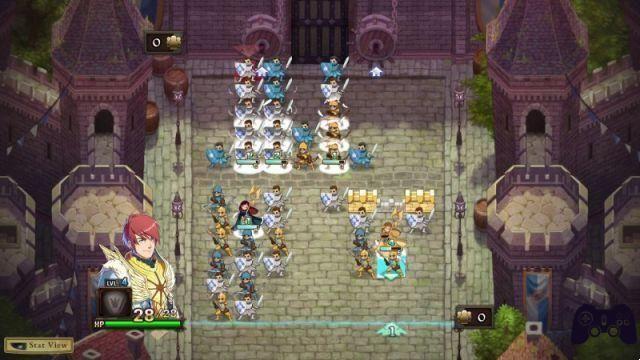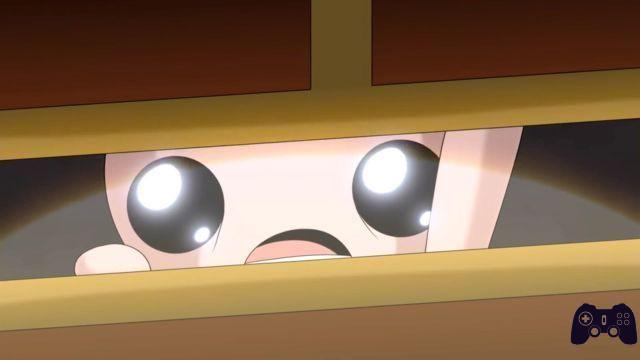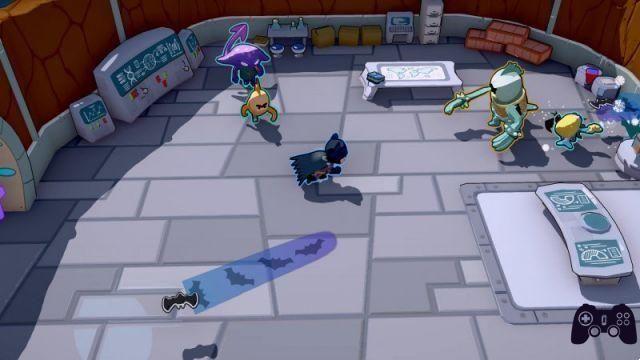You have to be really upset if you develop your own. first person shooter You went to recover a graphics engine from the 90s and decided to throw away thirty years of evolution of the genre to go in search of that gameplay that you fell in love with and led you to experiment with rocket jumping to reach your neighbors. 'balcony. You are older, you have little to do, you drink more and more infusions and by chance you do exercises to combat the pain in your joints, which from time to time keeps you company while you play. You can't do anything about it, because you really don't like how FPS games have evolved over the years, between soporific or completely absent single-player campaigns and hours of gameplay that yield money to spend on Santa hats to wear . servers. You're older, you realize, but you also know that you want to continue having fun with video games and you just can't stand those things.
Thinking about a development study boomer shooter, that is, modern shooters that use technologies from the past to offer absolutely outdated gameplay, we imagine offices full of (some) slightly older people, drinks in hand, making jokes that would never make it to Netflix and from time to time burping, generating hilarity among all his companions. We don't really know whether to give a positive or negative meaning to this image, but what we are clear about is that dissatisfaction can sometimes lead to great, extremely focused results, as we will see in the Ion Fury: Replica Review, the highly anticipated expansion to Ion Fury, a game developed using Duke Nukem's 3D graphics engine, Build.
Gameplay
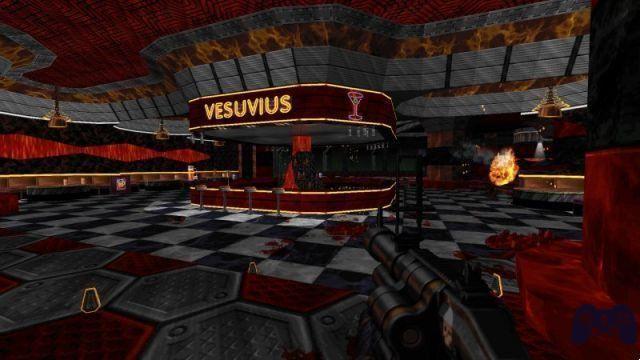
Let's assume that Ion Fury: Aftershock could easily have been a following, more than an additional package, and no one would have been offended. In fact, paradoxically what it has less than the base game can be considered among its strengths, because each subtraction was born from a reflection on what worked and what did not work in the original. For example, Aftershock has fewer levels than Ion Fury, but considering that many players complained about the excessive length of its campaign, the developers' choice is not necessarily a bad one. Also because the fifteen maps that make it up, for a total of five areas to explore, are really well done.
The protagonist is always Shelly "Bomba" Harrison who, during the celebrations for her victory against Heskel, finds the bar where she would like to get drunk full of enemies who want to kill her. Just enough time to realize that Heskel is still alive and our team is armed and ready to finish the job. It seems that she doesn't like to leave unfinished business. Plus his revolver Loverboy wants to sing.
When we reached the end of the first level of Ion Fury: Aftershock we were surprised not to have found six secrets. The game tells us this before leaving, to allow us to continue exploring again, but nevertheless we believed we had been much more precise in the searches carried out within the labyrinthine bar and connected areas, where each corner housed a piece of armor, some ammunition , new weapons or some gag straight from the 90s. However, there was still much to discover, despite the blood spilled... more of the enemies than ours. Ion Fury: Aftershock's difficulty is certainly calibrated upwards, which isn't surprising considering we're talking about levels intended for those who've already finished the original. However, Voidpoint has avoided as much as possible filling them with positioned enemies just for the sake of numbers, instead building architectures that magnify gunfire and carefully working on positioning. We die often, but always with the feeling of having taken at least a small step forward or of having understood what to do to avoid dying again... at least in the same place.
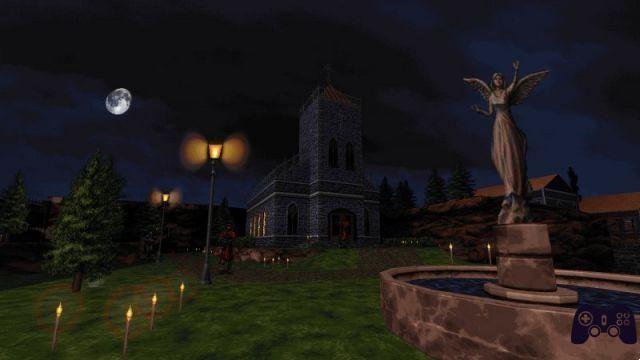
The world around us is fragile, in the sense that, like the best Duke Nukem 3D levels, there are buildings collapsing, objects exploding, and walls collapsing. The developers' familiarity with the Build engine allowed them to focus some maps precisely on it. Destruction of stage elements., to intertwine the player's path as much as possible, without at any time making it difficult for them to understand where to go. An explosion here, a steel ball there and the path is open. You move forward, kill enemies, spend time examining areas of the maps inch by inch looking for secrets, and then you move forward. Ion Fury: Aftershock works like this from the first to the last level, except for the three where you race on a motorcycle, which are much more direct since they were designed to break the rhythm of the shooter levels, to avoid the oppression created in some of the levels. base game.
Old School
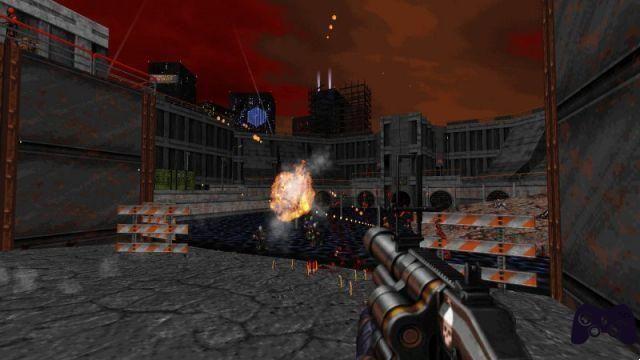
In technical and filming terms, we are obviously faced with the same experience. It must be said that Build has never been used so well and the level of detail in some areas is greater than one would expect. Having made the point, it's also fair to say that for boomer shooter fans, the graphics matters relatively (otherwise they would have dedicated themselves to a more satisfying genre from this point of view). That is to say, it really matters where the developer manages to demonstrate that he can squeeze the core out of the old tool used to develop his game. In this, Voidpoint's work is undoubtedly excellent, both for the variety of the areas and their composition.
As mentioned, the footage also confirms the excellent work done with the original. So the action remains high-speed, the weapons satisfying to use and very varied, including machine guns with incendiary bullets, grenade launchers, electrified batons and, of course, the Loverboy. The enemies are always the same, but with some additions that enrich the battles, without revolutionizing them.
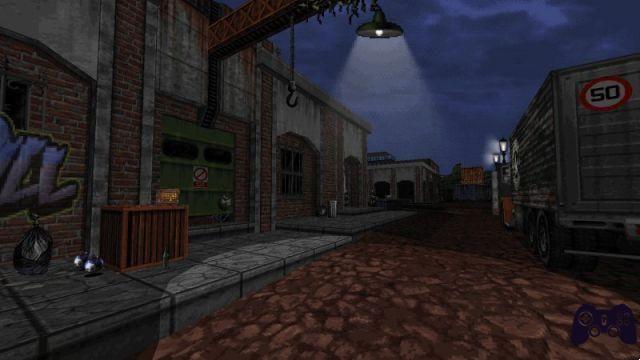
The real novelty are the aforementioned motorcycle sequences, very fast and brutal, with not too subtle echoes of Road Rash, which fit perfectly with the setting and the protagonist, providing an extra touch to the gameplay and wonderful for how they exploit the Build. Finally, it's worth mentioning the new difficulty level, which allows you to trigger the challenge level, and the Arrange mode, which allows you to replay Ion Fury levels with revised enemy positioning. These are welcome additions that enrich an already excellent package. For the rest, there are some indecisions in the artificial intelligence of the enemies, who continue to perform absurd actions, sometimes bordering on the comical, when they do not end up trapped on the stage.
After all Ion Fury: Aftershock is simply the ideal expansion, that is, one of those capable of both expanding the basic game formula and offering fans what they liked about it in an even more dazzling way. It's really hard to think of any reason why someone who loved Ion Fury shouldn't pick it up, since it offers so many high-quality new levels, non-stop shooting, and so many cool extras. What are you still doing here?
Conclusions
digital delivery Vapor, GoG Price 14,99 €Holygamerz.com
Readers (4)
7.2
your vote
PRO
- Excellent level design
- The motorcycle levels break up the rhythm well.
- Use the build perfectly.
AGAINST
- Certainly AI has not made great advances
- It actually makes you feel old.




